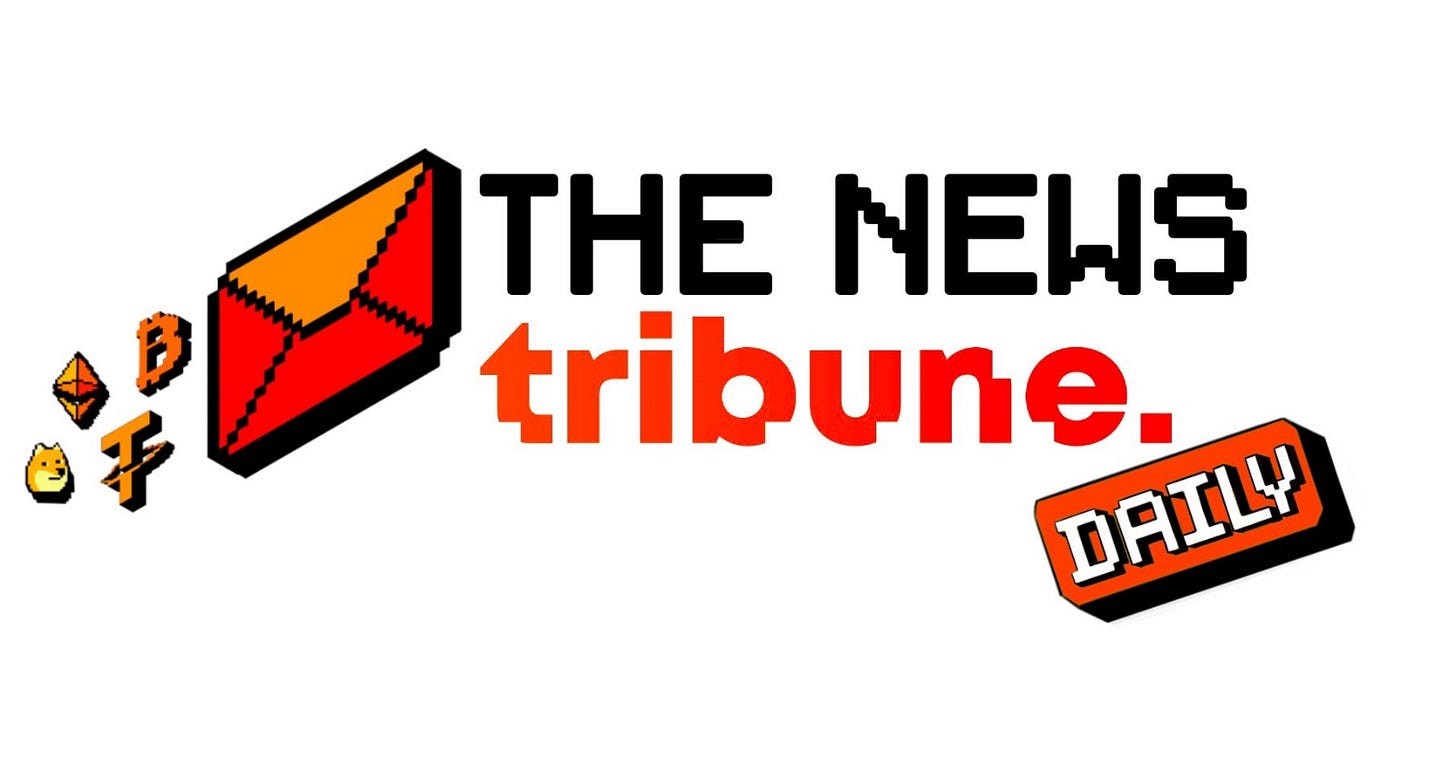CoinShares and Cantor bet on Solana, El Salvador challenges the IMF
Welcome to the Daily Tribune of Wednesday, June 18, 2025 ☕️
Hello Cointribe! 🚀
Today is Wednesday, June 18, 2025 and as every day from Tuesday to Saturday, we summarize for you the news of the last 24 hours you should not have missed!
But first…
✍️ Cartoon of the day:
A quick look at the market…
🌡️ Temperature:
⛈️ Stormy
24h crypto recap! ⏱
🪙 CoinShares enters the Solana ETF race
CoinShares filed an S-1 Form with the SEC to launch a spot Solana ETF, becoming the eighth player to do so.
🏦 JPMorgan prepares a "JPMD" stablecoin
JPMorgan filed the trademark "JPMD" with the USPTO for a potential stablecoin, covering exchange services and digital asset payment services.
⚔️ Cantor Fitzgerald recommends betting on Solana
Cantor Fitzgerald advises investing in Solana rather than Ethereum, highlighting the performance and growth of the SOL network.
🇸🇻 El Salvador adds another 240 BTC despite the IMF
El Salvador has acquired 240 BTC since December 2024, continuing its purchases fueled by Bukele’s presidency despite IMF restrictions.
🧠 Kraken strengthens its positioning on emerging tokens
The crypto platform Kraken strikes hard by unveiling a public roadmap listing 39 tokens under analysis, including several still little-known gems like Sui Name Service (SNS), Suilend (SEND), Navi Protocol (NAVX), and Hyperliquid (HYPE). These projects cover sectors experiencing explosive growth: next-generation DeFi, artificial intelligence, DePIN, and the SUI ecosystem.
Stated goal: to offer simple, fast, and secure access to the tokens of tomorrow, without having to multiply wallets, platforms, or risks. Kraken centralizes everything in a single interface, with integrated staking, low fees, audited proof of reserve, and 24/7 customer support.
With this strategy, Kraken directly targets investors who want to get ahead of upcoming trends without sacrificing security or compliance.
Crypto of the day: Chainlink (LINK)
🧠Technology & innovation
Chainlink positions itself as the backbone of the Web3 ecosystem, acting as a decentralized network of oracles that allows integration of real-world data — such as financial prices, sports events, weather, etc. — into smart contracts located on blockchains like Ethereum.
With the evolution toward Chainlink 2.0 and the CCIP (Cross-Chain Interoperability Protocol), Chainlink now offers a secure one-stop interoperability gateway, allowing data and value flows between different networks.
💰 The role of the LINK token
The LINK token is central to the Chainlink ecosystem:
It serves as collateral for oracle nodes, ensuring their reliability.
Used to pay operators providing on-demand data.
Enables staking to participate in establishing trust links on the network, especially with Chainlink 2.0.
Its initial distribution was pre-mined, with a portion sold during the ICO and the rest reserved for the team, advisors, and infrastructure, thus ensuring development financing.
📊 Market data (as of June 18, 2025)
Current price: $13.12 USD
24h change: –3.03% (decrease observed by CoinMarketCap)
Market capitalization: about $8.514 billion USD
CoinMarketCap rank: #14
Circulating supply: 657,099,970 LINK
24h trading volume: $353.1 million USD
Global dedollarization accelerates!
A discreet but strategic reshaping of the global economy is underway. While the BRICS and other emerging powers multiply trade in local currencies, the US dollar is slowly losing its status as the essential reference in international trade. Far from symbolic, this change could redefine the balance of global economic powers.
A concrete shift towards local currencies
The dedollarization dynamic is no longer limited to diplomatic speeches. It manifests itself in a significant increase in transactions in national currencies. India and Russia, for example, have increased their trade volume to 27 billion dollars by adopting the rupee as the settlement currency, compared to 13 billion previously. A similar trend is emerging between Brazil and China, now proponents of the Brazilian real for their exchanges.
In this logic, the BRICS Pay system represents a notable advance. Designed to allow cross-border payments in local currencies, this tool is already deployed in nearly 50 countries, offering a direct alternative to the SWIFT system. This infrastructure is reinforced by the New Development Bank, the financial arm of the BRICS, aimed at supporting strategic projects independently of traditional circuits dominated by Western institutions.
In Africa, countries like Tanzania, Kenya, Nigeria, and Ghana follow suit. Ghana is experimenting with gold payments, while Saudi Arabia now accepts yuan payments for its oil exports. These initiatives illustrate the diversity of monetary levers adopted, oriented toward greater economic sovereignty.
Between sovereign choices and American countermeasures
Facing this evolution, the United States have considered an offensive response. Donald Trump thus established 100% tariffs that he has for the moment put on hold. This protectionist threat reflects Washington’s growing concern about the erosion of its monetary lever, long used as a power tool.
The BRICS, in response, adopt a nuanced stance. While some analysts mention the possibility of a common currency, Brazilian President Lula recently ruled out this hypothesis. At a summit, he emphasized that " resorting to unilateralism undermines the international order ", calling for a balanced overhaul of the global financial system without rushing the creation of a single currency.
This positioning reflects a strategic adaptation desire. By preferring to strengthen cross-use of local currencies and building autonomous infrastructures, the BRICS avoid the pitfall of a premature monetary project while gradually weakening the hegemony of the greenback.
This dedollarization movement, which unfolds simultaneously across several continents, marks a critical phase in the global monetary transition. It is literally a deep reconfiguration of international economic governance.










